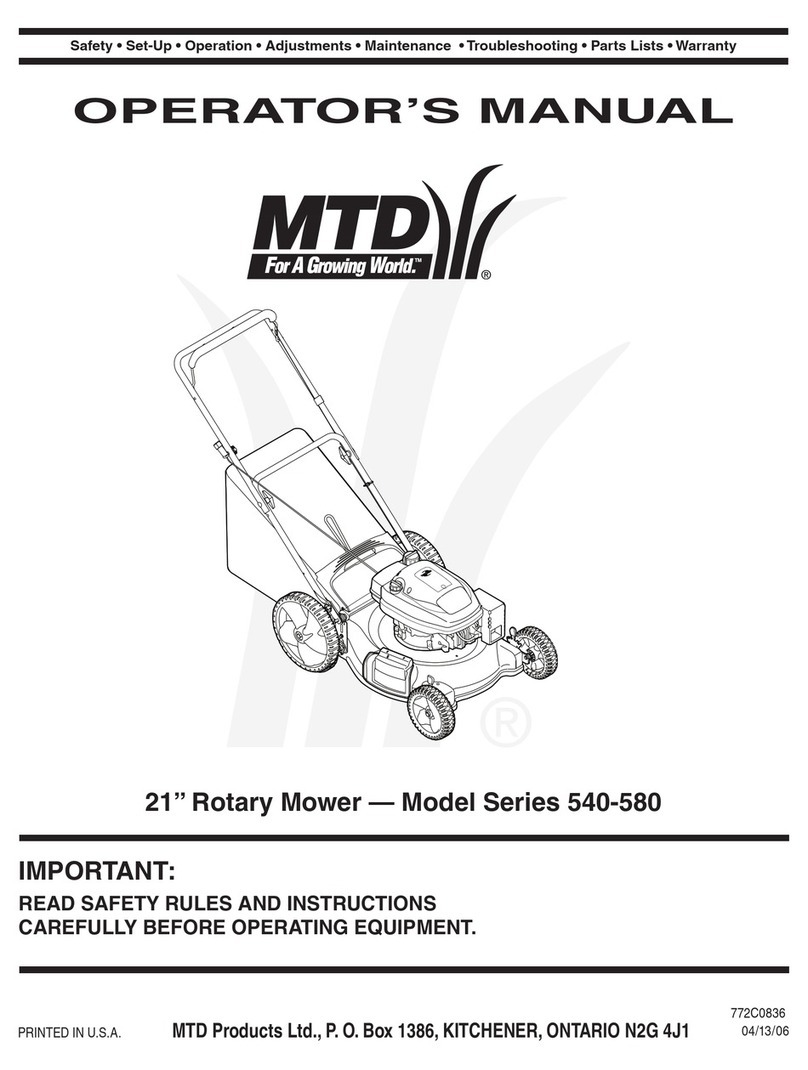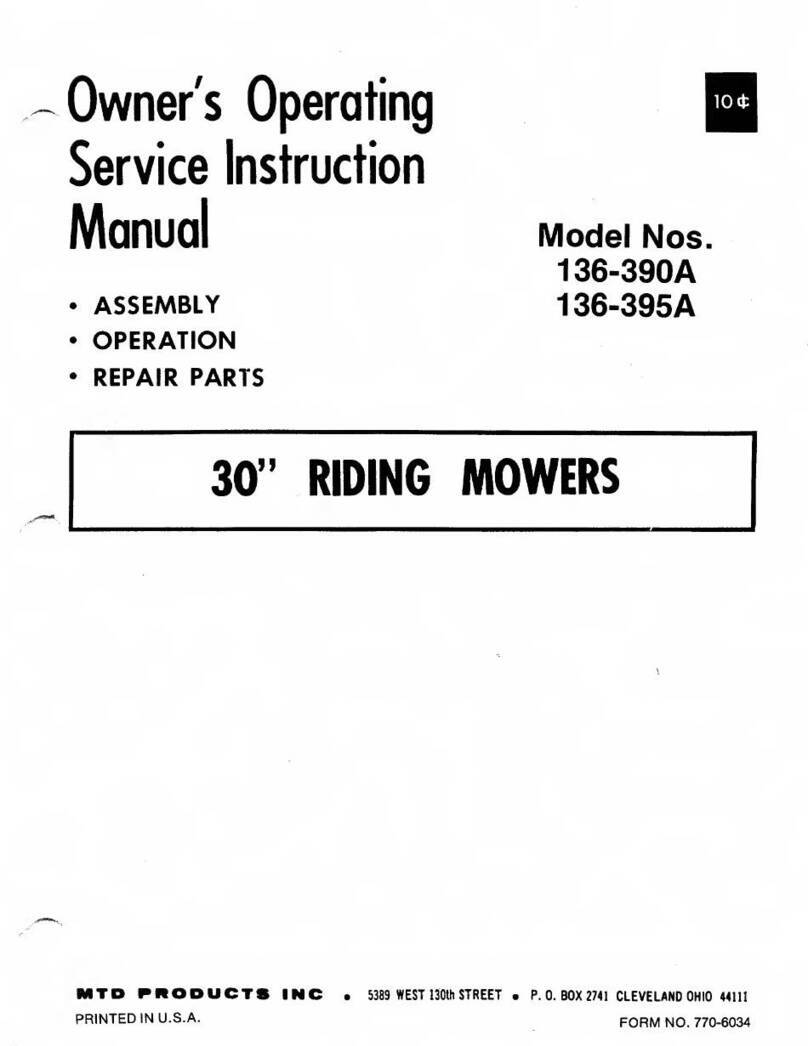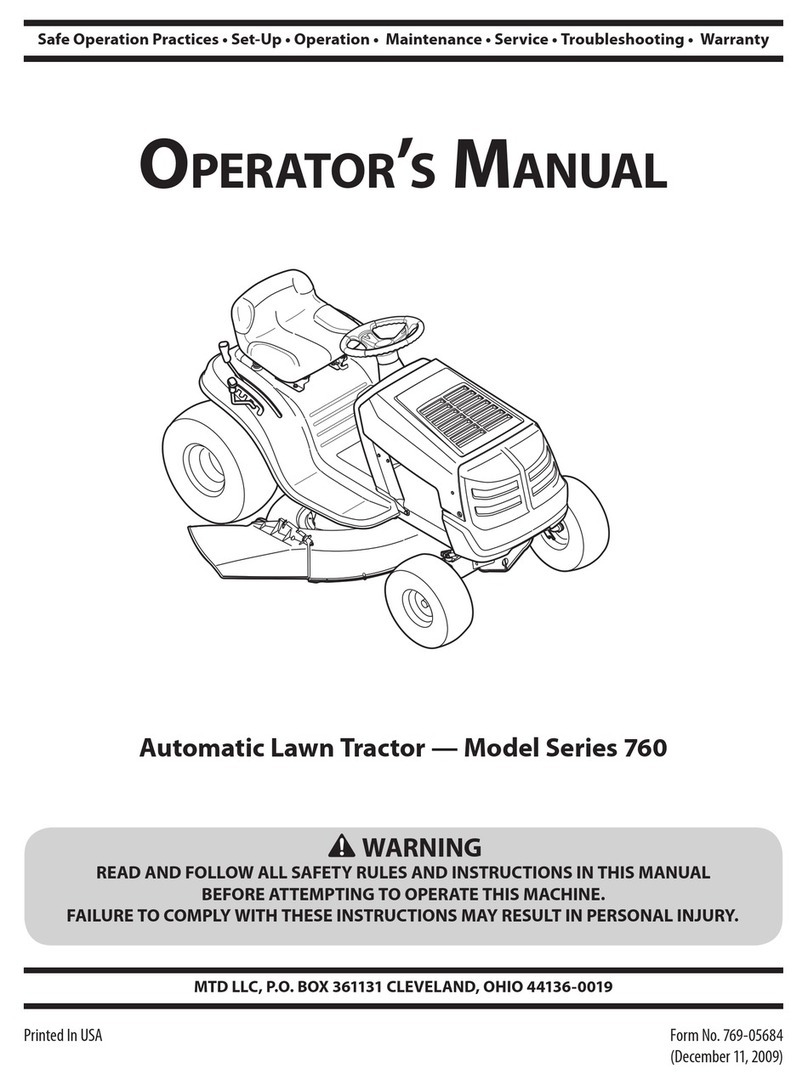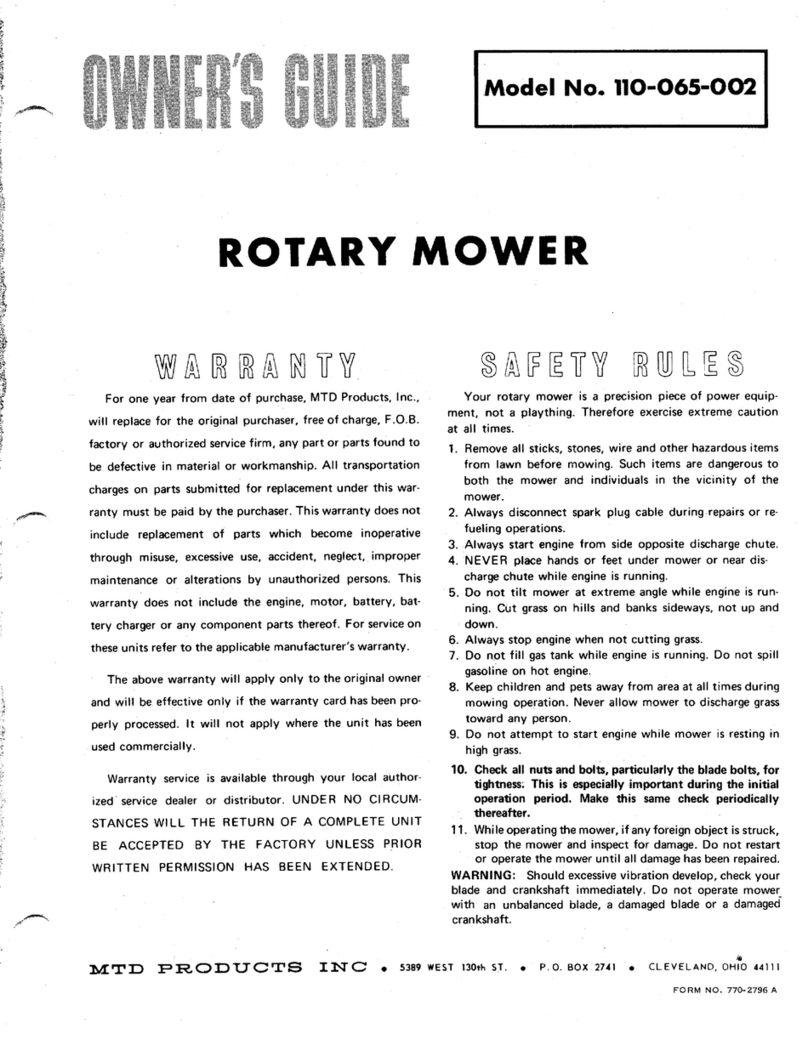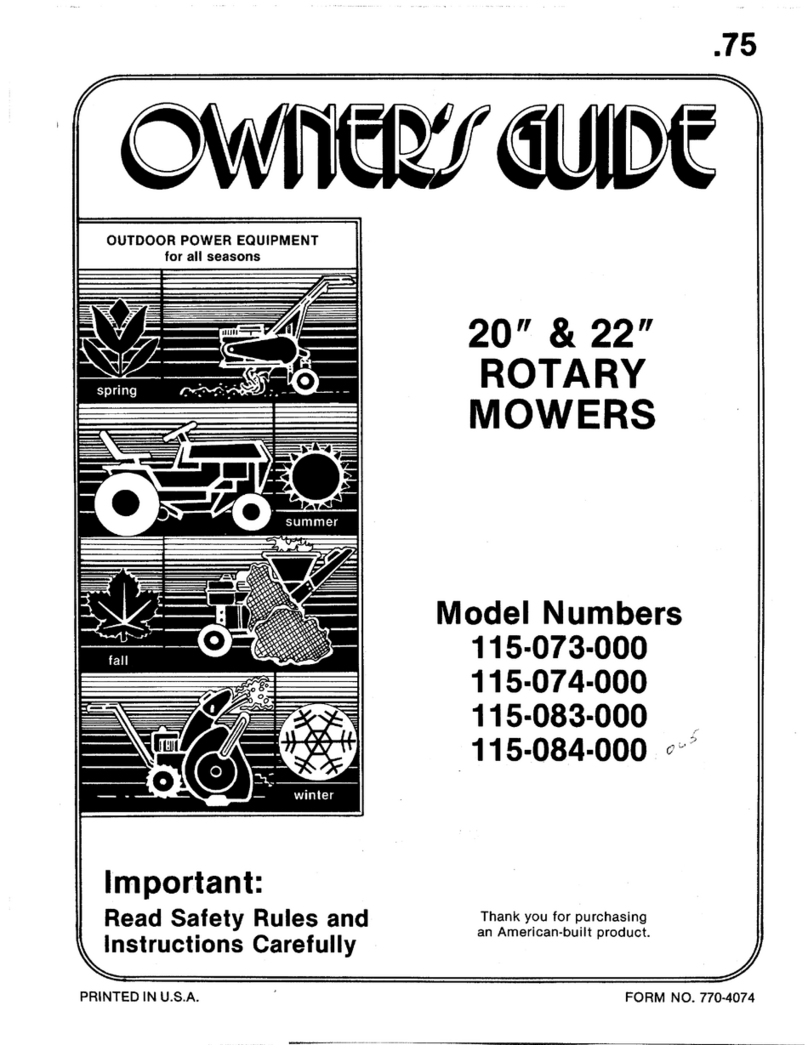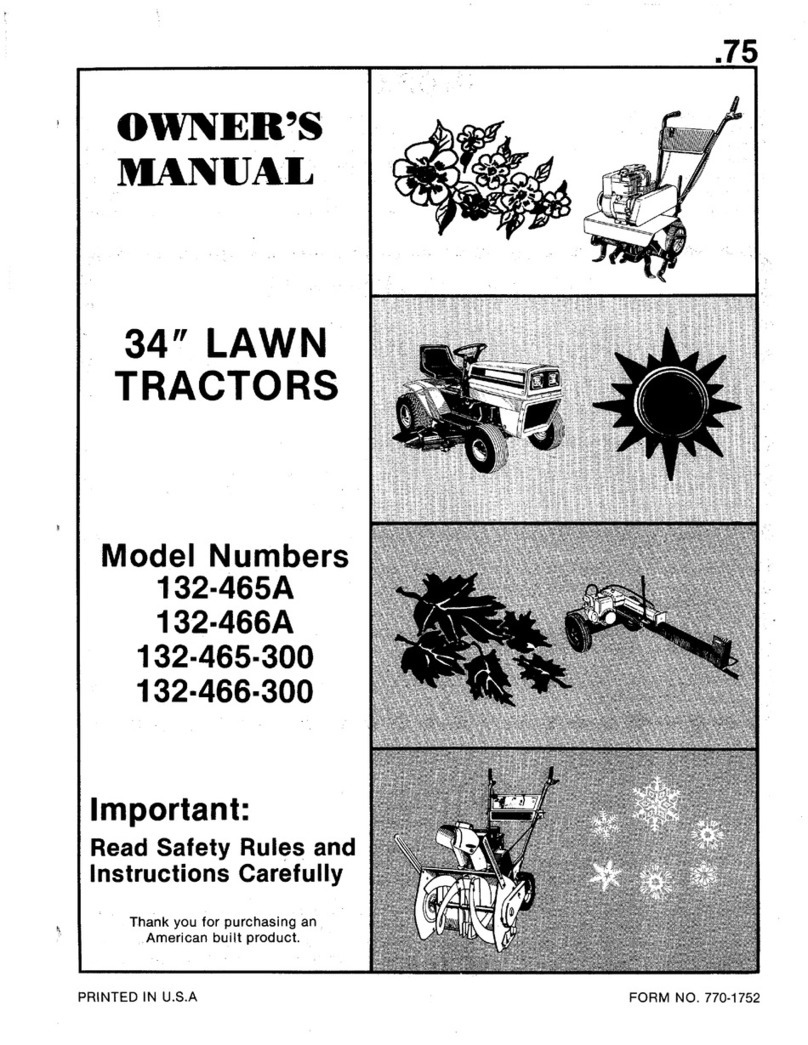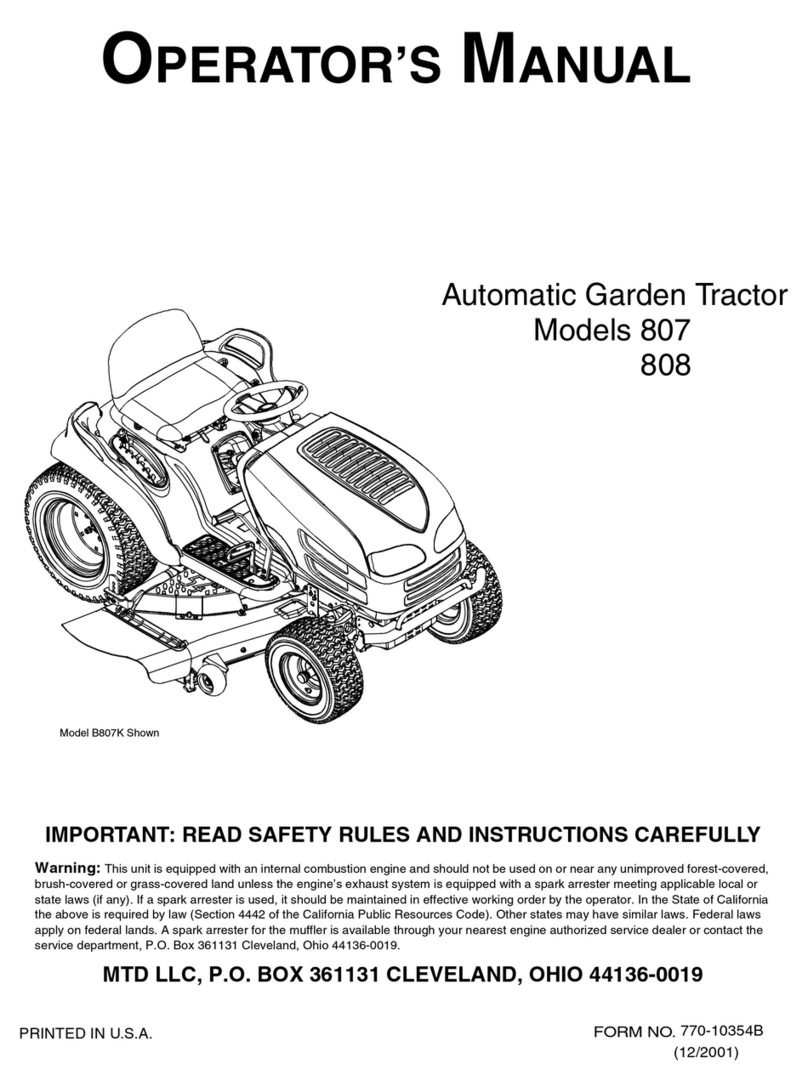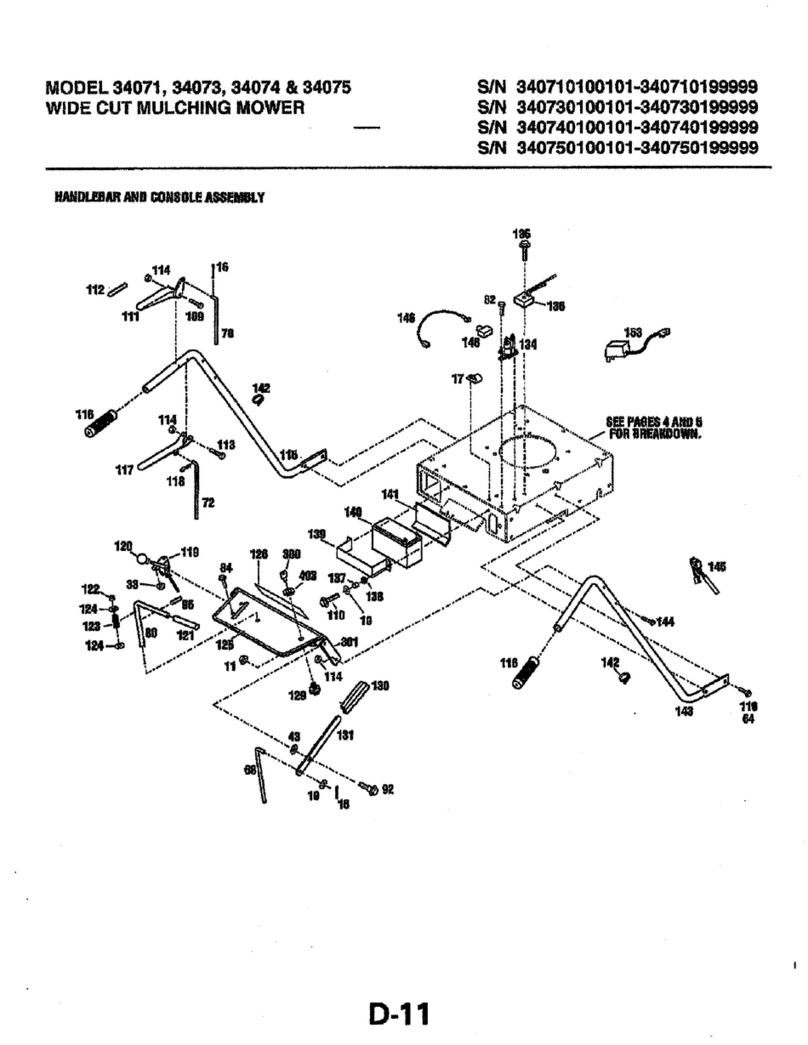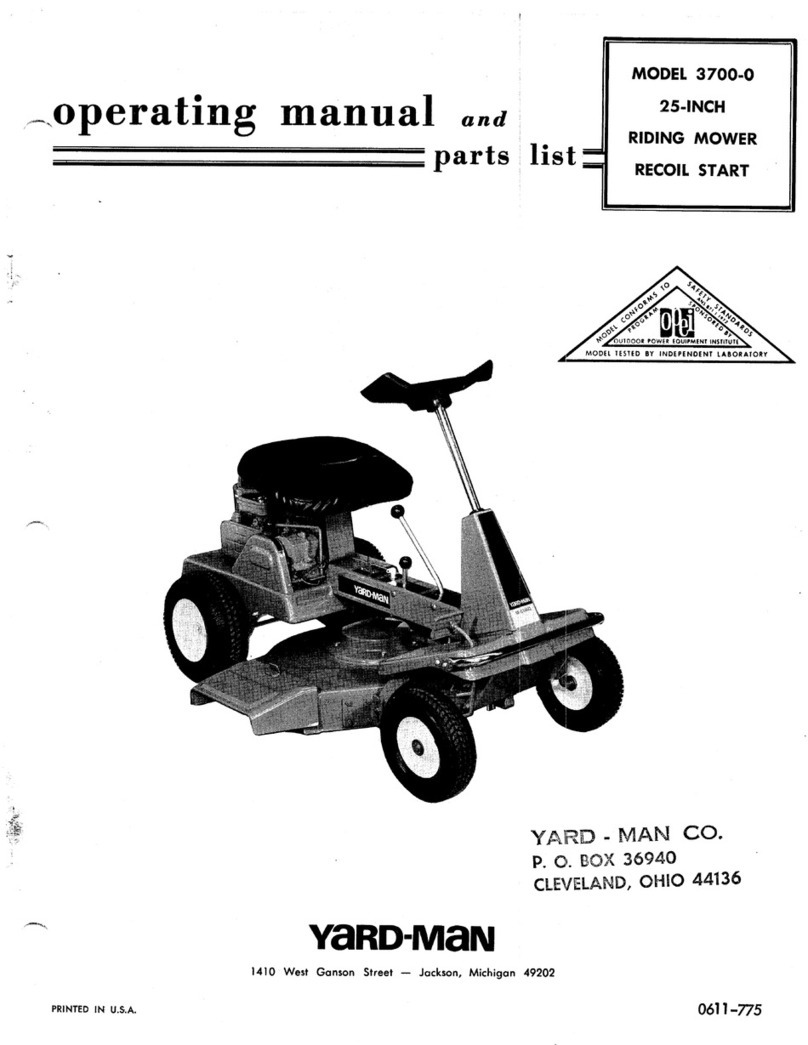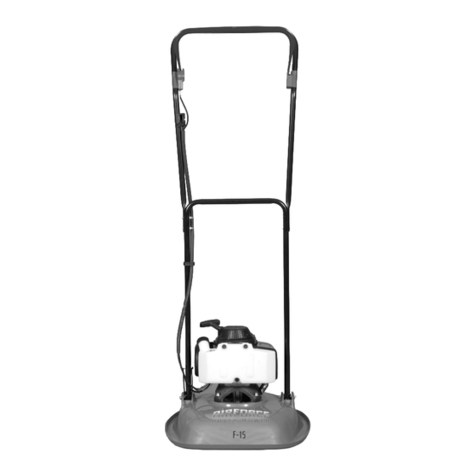MTD 137-496A User manual
Other MTD Lawn Mower manuals
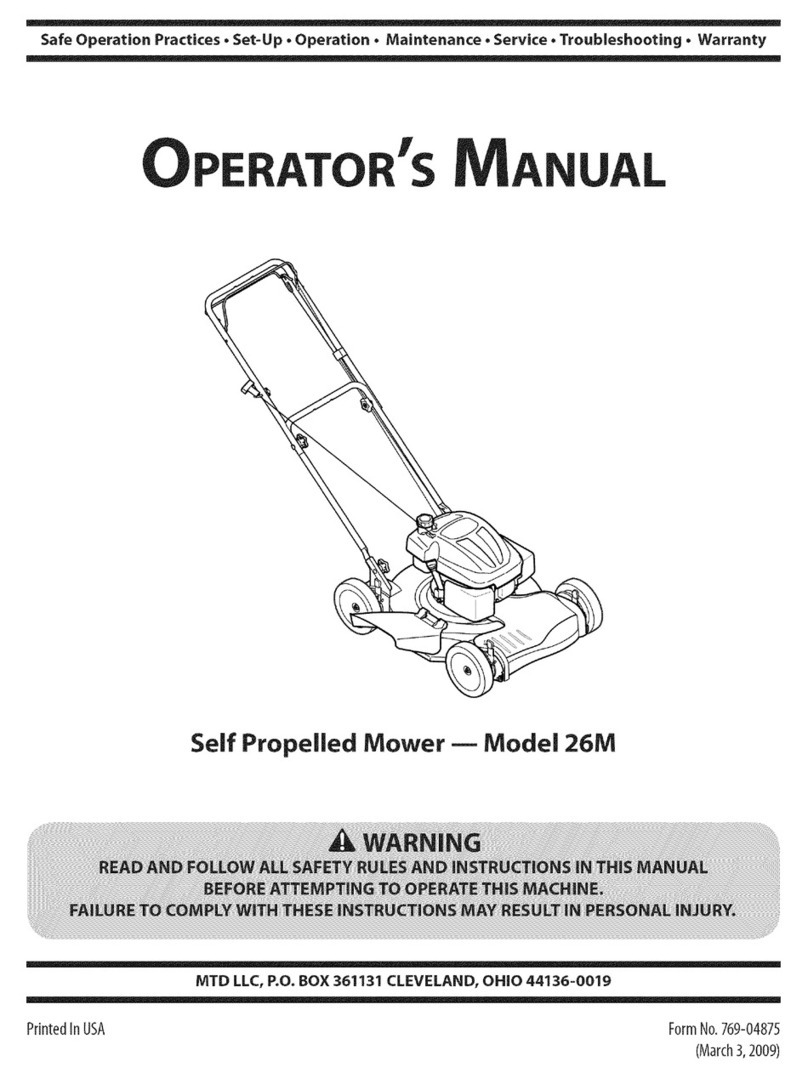
MTD
MTD 12A-26M7001 User manual
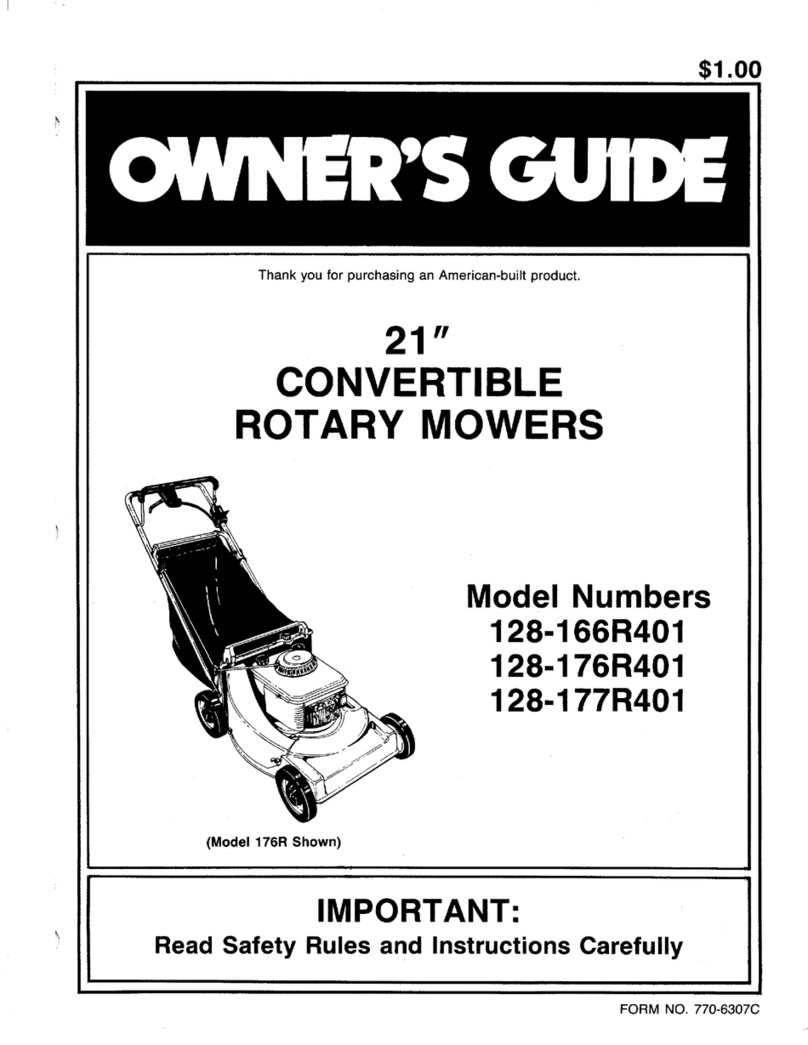
MTD
MTD 128-166R401 User manual
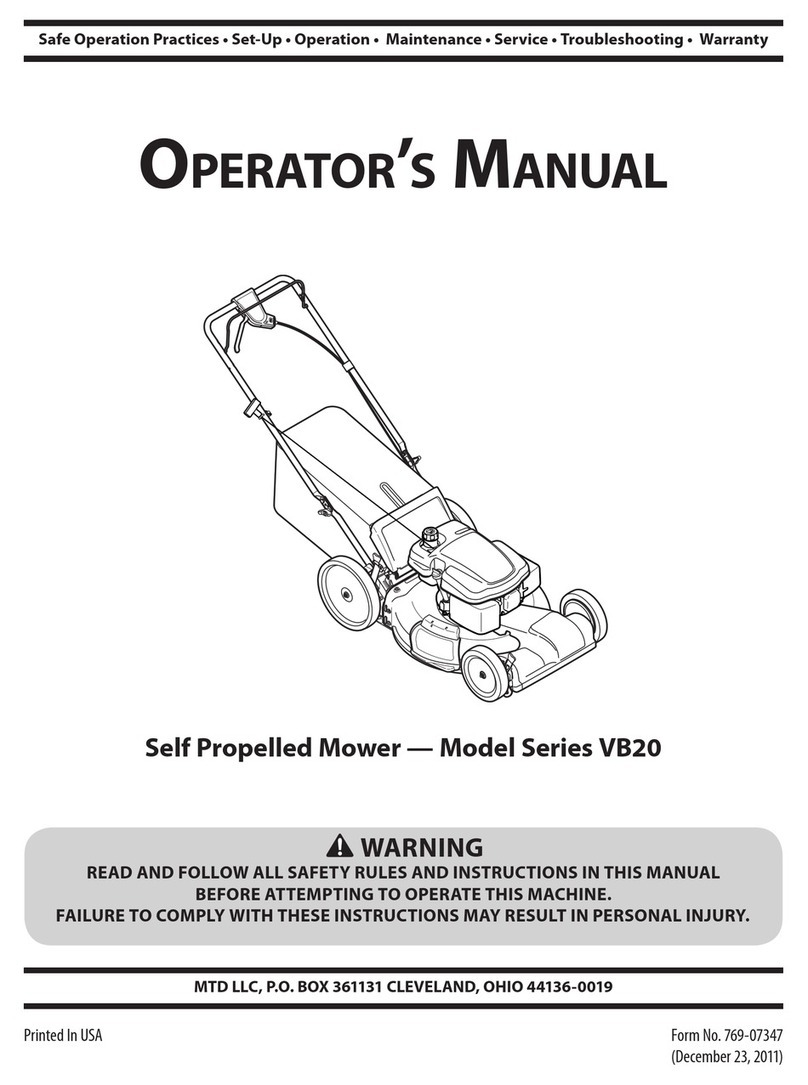
MTD
MTD 12AGB2JA004 User manual

MTD
MTD Gold 13AX795S004 User manual

MTD
MTD 124-232A000 124-238H000, 124-2 User manual

MTD
MTD 127-280-300 User manual
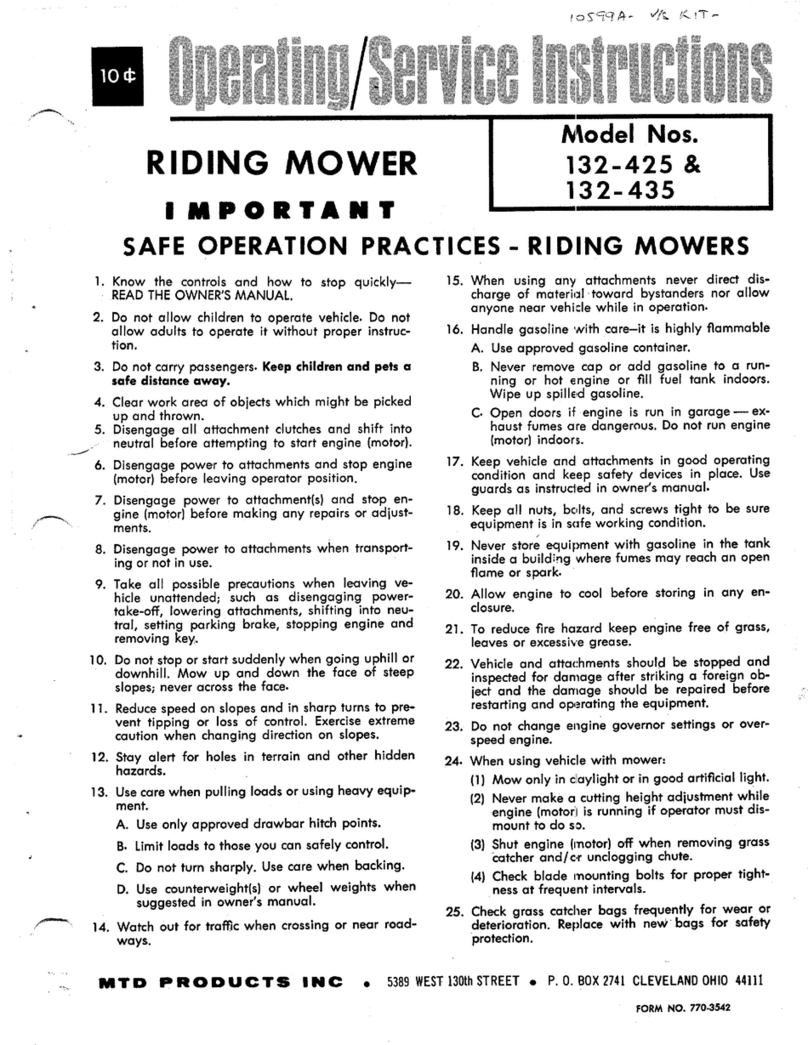
MTD
MTD 132-425 User manual

MTD
MTD 19A30014OEM User manual
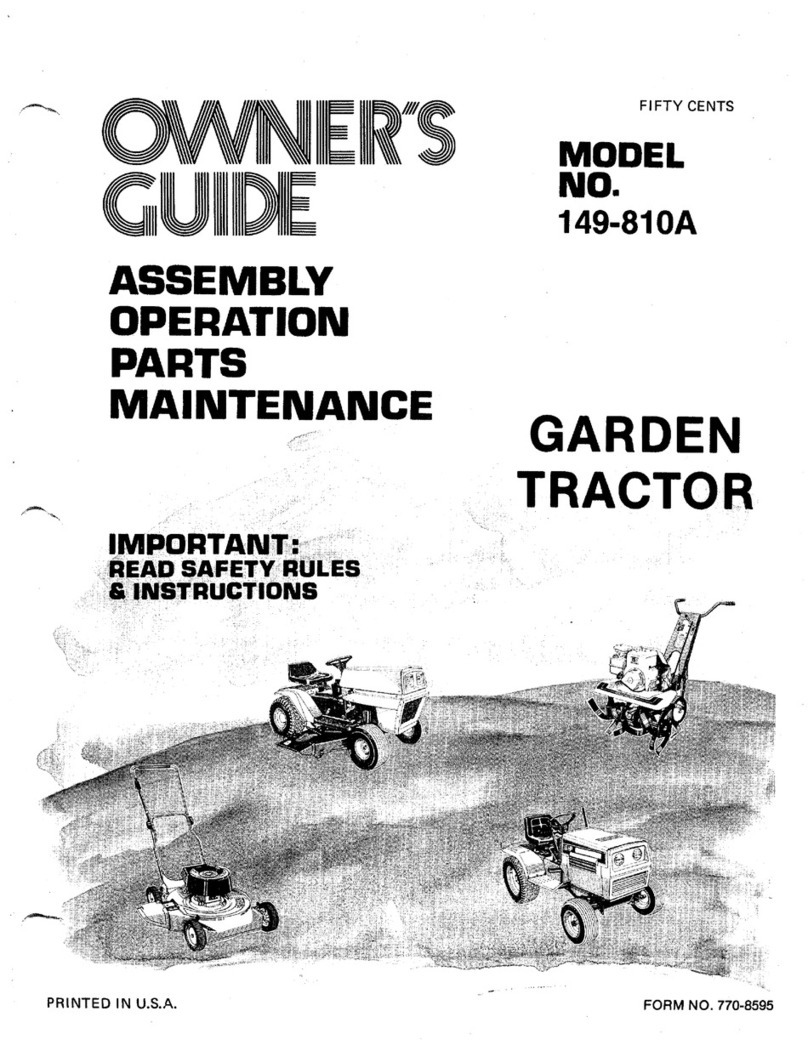
MTD
MTD 149-810A User manual
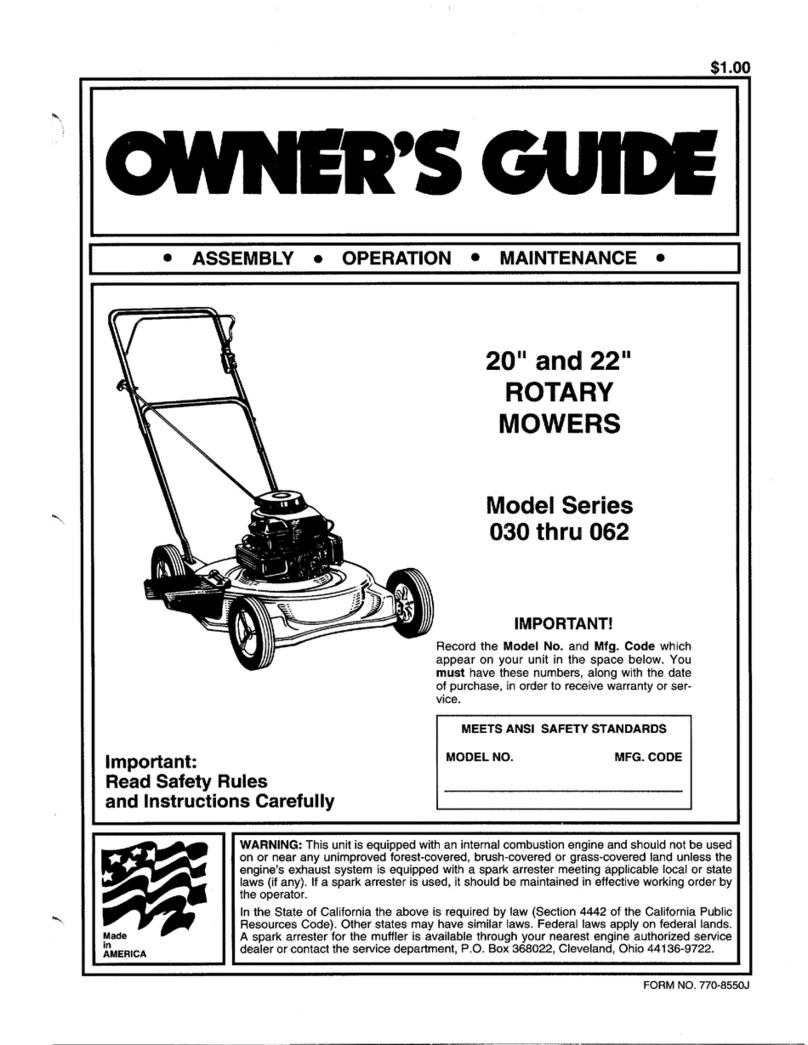
MTD
MTD 030 thru 062 User manual
Popular Lawn Mower manuals by other brands

TALEN TOOLS
TALEN TOOLS AVR HGM30 manual

DEWEZE
DEWEZE ATM-725 Operation and service manual

Weed Eater
Weed Eater 180083 owner's manual

Husqvarna
Husqvarna Poulan Pro PP185A42 Operator's manual

Better Outdoor Products
Better Outdoor Products Quick Series Operator's manual

Cub Cadet
Cub Cadet 23HP Z-Force 60 Operator's and service manual



